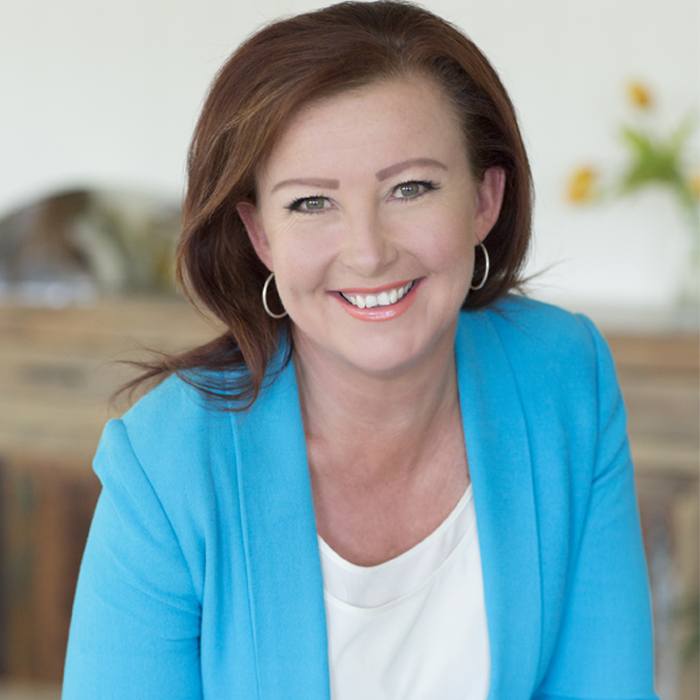
Your name in lights: The indirect costs of not managing fatigue
“ I’ve seen my fair share of accidents involving vehicles and trucks,” says veteran journalist and communications expert Kim Skubris (pictured right). As a police reporter over the last three decades, Kim attended plenty of fatigue-related incidents and saw how they affected individuals and businesses alike.
I’ve seen my fair share of accidents involving vehicles and trucks,” says veteran journalist and communications expert Kim Skubris (pictured right). As a police reporter over the last three decades, Kim attended plenty of fatigue-related incidents and saw how they affected individuals and businesses alike.
She also saw first-hand how companies that handled their aftermath poorly tended to suffer worse consequences over a longer period.
Her message to transport companies is simple: Have a communications plan in place before an incident happens.
What can go wrong?
We’re all familiar with fatigue incidents’ immediate impacts. Trucks and trailers and cargos are damaged. Drivers and pedestrians and road users may be hurt. But the full effect can be much more significant and take much longer to be felt.
Kim says that nowadays, news about crashes and other incidents, even near misses, can be in the public eye almost instantly. From dashboard cameras to mobile phones, video recorders are everywhere.
“When I started, back in the nineties, by the time you got to an accident and took a few shots, most of the action had already happened.
“But these days, everyone is a potential news journalist or reporter because pretty much everyone carries a phone that has broadcast capabilities.”
Communication is critical
“Most businesses have bad news at some point,” Kim says. “Bad news doesn’t necessarily become national headlines, but my critical advice is: do not put your head in the sand when it comes to communications.”
“Whether it’s your staff or your stakeholders or the media, they will fill a void with scuttlebutt and rumour. And that’s only going to be damaging to you.”
Most in the industry are familiar with the incident involving Cootes Transport. In October 2013, a fatal crash in Sydney set in motion a chain of events which eventually saw both Cootes and its parent company, McAleese, liquidated.
It wasn’t a fatigue-related incident. It was found, however, that Cootes' safety culture was not as developed as it could have been to prevent such an incident. Consequently, the company was held responsible for the chain of events which led to the fatality. At the time, it was also observed that the company was unable to handle enquiries from the media on the topic of the incident. This inability further highlighted other business inadequacies.
Kim notes that “I can’t find one comment from the parent company in that critical first 24 hours where they expressed sympathy for the victims’ families and loved ones.”
“Never say ‘no comment’.
“‘No comment’ to the media is a red rag to a bull.
“‘No comment’ to the staff looks like you don’t care.
“‘No comment’ to authorities insinuates you might not be on top of things.”
Again, Kim emphasises that the key is to have a communications plan before you need it.
What does a communications plan look like?
A communications plan doesn’t need to be a massive document. It simply needs to specify who will speak on the company’s behalf and give some guidelines on what to say.
“It doesn’t matter whether you’re a small family business or a multi-million-dollar operation with employees around the country,” Kim says.
“The first thing to consider is who is going to be the first port of call, who is the person that’s going to take control of the situation.
“It’s most likely going to be the boss, but you need someone who will take the call."
Thus, it’s important for a business to have someone who has had media training so they can talk to the press and answer questions with confidence.
“In the event of an issue, this person can then surround themselves with people who can field the information and the calls from possibly concerned family members of your employees, business partners and others,” Kim says.
This highlights another important point: only designated and authorised people should speak to the media. In smaller companies, the owner or managing director is likely to be the only such person. But in larger companies, it’s prudent to have more than one spokesperson, to ensure they’re not overwhelmed if an incident occurs.
Finally, Kim says, “you need a chain of command as spokespeople. And you need a chain of command on who is going to filter the message,” to ensure your communications are confident and consistent.
If you haven’t already done so, engage a public relations or crisis communications expert as part of your regular business. They’ll help you create a plan and advise on messaging ahead of time. If an incident occurs, they’ll provide assistance in managing its aftermath.
There are lots of options available around media training and it’s definitely worth the investment for any business.
The final word: have the first word
If you find yourself in the spotlight, be proactive with your communications rather than waiting for the media to come calling. You don’t want to be reactive; rather, you should seek to drive the narrative and – as far as you can – influence how the story is told.
“You can express sympathy without admitting liability,” Kim says.
“You should always have something to say.”
You can express sympathy without admitting liability.
- This article has been developed as part of NTI’s The Business of Safety series with the aim of helping transport and logistics businesses become safer and more sustainable. The Business of Safety is funded by the NHVR’s Heavy Vehicle Safety Initiative, supported by the Australian Government.
- Information in this article is a guide only. It does not take into account your personal or business circumstances. Whilst all due care has been taken, you must not rely on the information as an alternative to legal, legislated regulatory and compliance requirements associated with your business activities. NTI.M002.13.06082021


